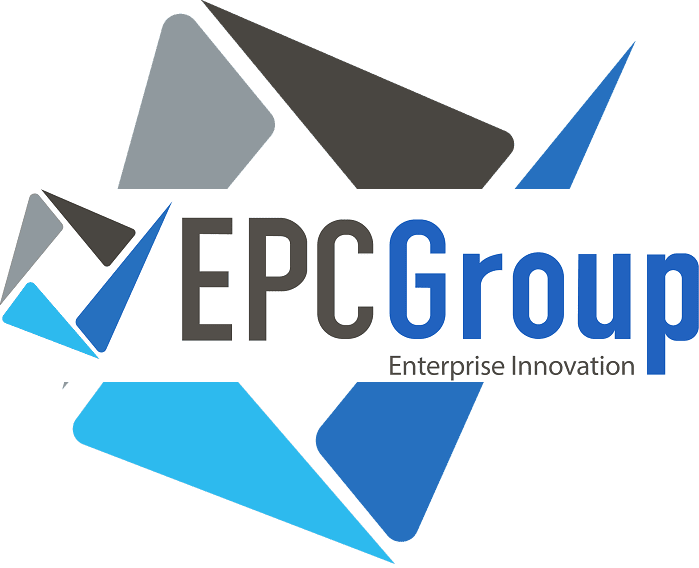Microsoft Power BI Governance & Deployment
- Power BI System Governance
- Building a Power BI Team
- Power BI Deployment Strategies
- Power BI Charge Back Model
EPC Group's Power BI Governance Approach
Once our Power BI experts are equipped with a solid understanding of your company’s infrastructure, business goals, users, compliance, and security requirements gathered during the assessment and discovery process, they will prepare a governance plan and roadmap to fit your needs and organizational goals. This governance plan will provide immediate and future goal strategies and an implementation plan with specific phases / tasks along the path to achieving a successful Power BI deployment and continued use of Power BI. EPC Group will provide guidance and support into what exactly those tasks entail, the components and resources required as well as the steps involved in each task. Key components of the governance strategy include, but not limited to the following:
- Users: Identifying resources for ongoing governance both at the IT and business user’s level.
- Definition of roles and responsibilities of key stakeholders at your organization
- Define IT capabilities for end user adoption, training and support requirements Strategy to ensure both business and technical users acquire the skills and knowledge necessary for maximum adoption of Power BI with minimal ongoing support and assistance.
- Technology: Leveraging features and tools to meet business requirements.
- Definition of specific Power BI deployment options and components that are needed to meet your desired outcomes.
- Overall licensing strategy around Power BI
- Process: How to accomplish common tasks as well as new business and technology requests
- Policy: Collection of principles and clear definitions on how the platform is to be utilized
- Implementation Roadmap: Includes a scheduled deployment plan and governance improvements addressed in order of priority and tailored to meet your unique business requirements.
EPC Group's Power BI Governance Best Practices Session | Microsoft Business Applications Summit
Session Overview
- Organizations are experiencing missteps when implementing Power BI due to the lack of a strategic governance strategy. Not implementing a Power BI “Power User” strategy and not having a defined “Power BI 36 Month Roadmap” are just a few examples.
- This session will cover core strategies and lessons learned from several hundred Power BI implementations that you can utilize to ensure long-term success with Power BI.
- This session will provide guidance around the tasks and related resources required to implement these strategies and I will also review how to build a Power BI chargeback model as well as a Power BI Center of Excellence (CoE).

Power BI System Governance
System governance is one of the most important components of any Power BI deployment. Structuring goals for what data assets are being governed and how they are governed. When structuring corporate BI, Power BI is governed to ensure data quality, adoption and security. Adoption is the most crucial component for the success of your deployment. The reporting layer in the Corporate BI mode is not owned by your organization so your ability to enhance reports is not available so a more trimmed down governance approach can be deployed here more than other modes. In an IT Managed Self-Service BI mode, Power BI needs a more complex governance structure do to the co-ownership nature of the platform. Governance is led by two key roles: Your Power BI Architect / Administrator owning the technology layers and your Power BI Power Users for the business-owned layers. You may also have additional teams involved as well. Each key role may establish different rules and processes, however they both benefit from implementing.
This is implemented in two ways:
- Environment consistency: Separating out environments into different functional areas. The common way to refer to this is development, quality assurance and production
- Reporting Standardization: Developing and implementing strategies to ensure a consistent and governed set of data refresh schedules | Key definitions for custom calculations and reporting related metadata
The best way to understand your Environment visibility is by tracking system usage patterns. Regardless of the deployment mode utilized, here are the elements that we recommend tracking in a Power BI governance program:
- System Usage: User frequency, auditing of publishing actions, datasets and reports. This info is valuable for compliance and security as well as identification of crucial reports and ownership transfer opportunities.
- Security: Shared reports and row-level security defined in the Power BI Service, as well as ownership of datasets, reports and dashboards. This information is vitally important for compliance and security.

There are 3 main strategies around sharing reports:
1. Sharing a read-only dashboard
2. Adding a colleague as a member of a group
3. Including a colleague as a recipient of a company’s content pack.
- Report Performance: A critical feature to enable adoption is the reports rendering speed. To many users, a well-designed accurate report is so slow that the perceived value is diminished.
- Data Source Usage: The information around data sources utilized, refresh operations, model sizes and calculations can be used to identify potential flaws in data integrity and overlap in effort. It’s also extremely important to monitor growth of models which have data imported.
Building a Power BI Team
Power BI team roles vary depending on whether the organizations goal is pursuing a Bottom/Up or Top/Down approach. One thing to keep in mind is that one key role must be present regardless of the deployment strategy: The Power BI Super-User is typically passionate about the possibilities of a data-driven culture and is a technically very skilled in end-to-end Power BI development. This includes Power Query, Power Pivot / DAX, dashboarding best practices and Power BI deployment strategies. The Power BI Super-User supervises and assists the more technically inclined departmental Power Users with implementation, communication with stakeholders, collaboration and best practices as well as offering mentoring and training when needed. Ideally an organization would have one single Power BI Super-User with departmental Power Users.

The most prevailing difference between roles for Self-Service BI is between report consumers and modelers. Report consumers interact with report views and dashboards, but wouldn’t normally define M queries, data model artifacts or DAX calculations within a report. Power BI data modelers would own the queries, data models and calculations. Its recommended to have a dedicated Power User monitor usage in a Self-Service BI scenario. This Power User would work to understand patterns and uncover popular Power BI reports and models that could become candidates for upgrade to other tools, like SQL Server Analysis (SSAS), Tabular models and SQL Integration Services (SSIS) ETL processes. In a corporate BI scenario one of the most important roles is the Power BI Super-User. This individual must ensure the strategic prototyping process is being deployed methodically to assist with requirements discovery.

Finally, Power Users, and the Power BI Super-User must all collaborate during the ownership transfer process from their IT Partner post implementation. EPC Group can help you organize and streamline this process.
Power BI Deployment Strategies
- Business Self-Service BI – With this scenario, the business users are most empowered and have a great deal of control. Although some governed data sources may be utilized as part of the overall solution there may be non-governed data sources involved which allow for exploring data patterns that might very well go beyond the data recorded in your corporate data warehouse. The critical difference with this type of strategy is that the business units take ownership and support for this type of solution.
- IT Managed BI – In this scenario, business users utilize Power BI as a reporting layer over governed data sources. With this strategy, IT governs the data layer which adheres to conformed enterprise master data policies. At the same time, the business owns the reporting layer which may or may not adhere to the same development cycles and governance standards promoted by IT.
- Corporate BI – This scenario is frequently referred to as enterprise reporting. This is where IT has full ownership of the entire solution and releases reports for user consumption.
Each of the above scenarios can be deployed around the particular requirements and user base needs. IT can increase value by providing additional infrastructure layers to automate, integrate, and maintain data source quality with tools like Master Data Services, Data Quality Services and SQL Server Integration Services.
Finally, Power Users, and the Power BI Super-User must all collaborate during the ownership transfer process from their IT Partner post implementation. EPC Group can help you organize and streamline this process.


Power BI Chargeback Model
Implementing a Power BI Chargeback Model is key to ensuing the costs of Power BI’s licensing as well as the related Power BI consulting services your organization procures. This ensures that each department or operating company within your organization bears the cost of this powerful and industry leading platform.
A Power BI Chargeback Model insures the following:
- Clear and defined budget: Each aspect of a Power BI implementation has a defined and identified cost which can be equally spread out to the organization’s key departments. This allows IT or the overall “shared IT services” model to correctly budget out the Power BI platforms costs and the associated level of effort to ensure all costs are properly shared by all those using the solution.
- Best Practices Roadmap & Planning: A large number or organization’s hold off on key elements or phases of a Power BI implementation due to cost constraints and related budgetary concerns before they realize the full ROI potential of the platform. By implementing a Power BI Chargeback model the required phases and granular milestones can be properly allocated and planned by the organization.
- Future Scalability: When a best practices Power BI Chargeback model is put in place, the various stakeholders in the organization will become more “on board” with the key aspects of Power BI, including future planning, which allows for a more long-term and thought-out strategy which ensure future scalability and compatibility.
- Stronger Power BI Governance: When organizations adapt a Power BI Chargeback Model, they are required to identify the key players in each department which is utilizing the solution. This enables IT and the organization as a whole to assign key Power BI strategy and related task items to team members who are then assigned specific governance tasks.
Why Choose Us
Why Organizations Recognize EPC Group's Consulting Services as the Industry Leader

EPC Group wrote the book on SharePoint & Power BI

Microsoft Partner for 25+ Years
Over 4 million Office 365 users successfully migrated
200+ years combined senior team migration experience

Expertise migrating to Office 365 in every vertical
EPC Group's Chief Architect Errin O'Connor was on the original SharePoint and Office 365 Beta teams
Our Value Addition Services
Get customized service solutions for every business need



